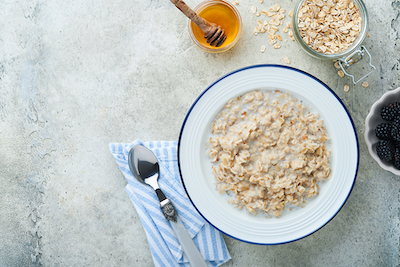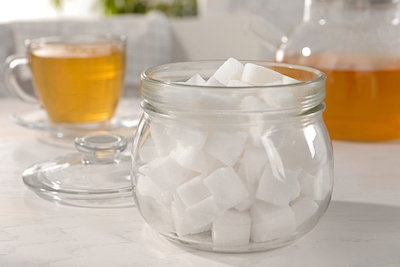When it comes to choosing a healthy breakfast, oatmeal and bran are two popular options that often come to mind. Both are known for their high fiber content and other health benefits. However, there are some differences between the two that may make one a better choice than the other depending on your individual needs and preferences. In this article, we’ll explore the nutritional differences between oatmeal and bran, their health benefits, and how to incorporate them into your diet.
Nutritional Differences
Oatmeal and bran are both good sources of fiber, but the type and amount of fiber they contain differs. Oatmeal is high in soluble fiber, which dissolves in water to form a gel-like substance that helps to lower cholesterol levels and improve digestion. Bran, on the other hand, is high in insoluble fiber, which helps to promote regular bowel movements and prevent constipation.
In terms of macronutrients, oatmeal and bran are fairly similar. Both are low in fat and high in carbohydrates and protein. Oatmeal tends to be slightly higher in calories and carbohydrates, while bran is lower in calories and higher in protein. Oatmeal is also a good source of vitamins and minerals, including thiamin, magnesium, and phosphorus. Bran is a good source of iron, magnesium, and zinc.
Health Benefits
Both oatmeal and bran offer a range of health benefits, thanks to their high fiber content and other nutrients.
One of the main benefits of oatmeal is its ability to help lower cholesterol levels. Soluble fiber has been shown to reduce LDL (bad) cholesterol levels by binding to cholesterol and preventing it from being absorbed into the bloodstream. This can help to reduce the risk of heart disease and stroke.
Bran, on the other hand, is known for its ability to promote regular bowel movements and prevent constipation. This is due to its high insoluble fiber content, which adds bulk to the stool and helps it move through the digestive system more easily. Bran has also been shown to have a beneficial effect on blood sugar levels, which may be helpful for people with diabetes.
Oatmeal and bran both have anti-inflammatory properties as well. Oatmeal contains avenanthramides, a type of antioxidant that has been shown to reduce inflammation in the body. Bran contains lignans, which are also antioxidants that have anti-inflammatory effects.
Incorporating Oatmeal and Bran into Your Diet
Both oatmeal and bran are versatile ingredients that can be used in a variety of ways to add fiber and other nutrients to your diet.
Oatmeal can be eaten hot or cold and can be flavored in a variety of ways. It can be cooked with water or milk, and can be sweetened with honey or maple syrup, or flavored with cinnamon or nutmeg. Oatmeal can also be used in baking, such as in muffins or granola bars.
Bran is often used as a topping for yogurt or oatmeal, or can be added to smoothies for an extra fiber boost. It can also be used in baking, such as in muffins or bread. Some people also use bran as a substitute for breadcrumbs in recipes such as meatballs or meatloaf.
When incorporating oatmeal and bran into your diet, it’s important to start slowly and gradually increase your intake. Too much fiber too quickly can cause digestive discomfort such as bloating and gas. It’s also important to drink plenty of water to help the fiber move through your digestive system.
Which is Better: Oatmeal or Bran?
The answer to this question depends on your individual needs and preferences. If you’re looking to lower your cholesterol levels, oatmeal may be a better choice due to its high soluble fiber content. If you’re looking to improve your bowel movements or prevent constipation, bran may be the better choice due to its high insoluble fiber content.
However, both oatmeal and bran offer a range of health benefits and can be incorporated into a healthy diet. It’s important to vary your sources of fiber and to eat a variety of fruits, vegetables, whole grains, and legumes to ensure that you’re getting a good balance of both soluble and insoluble fiber.
It’s also worth noting that not all oatmeal and bran products are created equal. Some commercial oatmeal products may be high in added sugars, while some bran products may be heavily processed and may contain added salt or sugar. When choosing oatmeal and bran products, it’s important to read the nutrition labels and ingredients list to ensure that you’re choosing a product that is minimally processed and low in added sugars and salt.
The bottom line is that both oatmeal and bran are healthy choices for breakfast or as a snack, offering a range of health benefits due to their high fiber content and other nutrients. Choosing between the two depends on your individual needs and preferences, but it’s important to vary your sources of fiber and to choose minimally processed products that are low in added sugars and salt. By incorporating oatmeal, bran, and other sources of fiber into your diet, you can improve your digestive health, lower your cholesterol levels, and reduce your risk of chronic diseases such as heart disease and diabetes.














